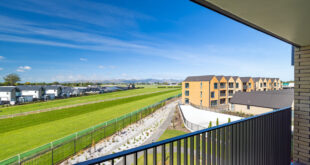Buying into a Retirement Village
With the implementation of the Retirement Villages Act 2003, the process has become more transparent for the benefit of residents and operators alike.
“Retirement villages should be registered and, once registered, they must follow the legalities of the Act,” says Denise Te Tai, manager at Selwyn Heights Retirement Village in Auckland.
 “People can now rest assured that their best interests are paramount to both the operators and their legal representatives.”
“People can now rest assured that their best interests are paramount to both the operators and their legal representatives.”
Once you’ve inquired about a village, take a good look at your information pack and all the material it contains by law to ensure you are making an informed choice.
The information will include your Occupation Right Agreement (ORA), which is your agreement to occupy your dwelling, plus a disclosure statement and the village’s Code of Practice.
Your next step is to sign an application agreement, which is a non-binding conditional agreement to buy. Once you’re happy to proceed, your deposit is held in a trust account for you until the settlement process is completed.
You’ll then be required to undergo a medical assessment by your GP that is then forwarded to the village manager for approval. If your application is declined, your deposit is refunded. If it is approved, then all documentation is forwarded to your lawyer to ensure that you fully understand every aspect of your agreement.
Once you have signed your ORA, you and your village manager will decide on an occupation date. At any stage during the 15-day ‘cooling off period’ you are entitled to a full refund if you change your mind.
More about the Paperwork…
Your Occupation Right Agreement is the legally binding document that sets out the terms and conditions agreed upon between you, the resident, and the operator of the retirement village.
ORAs vary from village to village so it is important to understand the differences. All monies – including the ‘estimated financial return’ you can expect when your unit/apartment is sold by the operator – should be explained in this document. Any changes must be mutually agreed upon before signing. This is the point at which your 15-day ‘cooling off period’ applies.
Your Disclosure Statement includes information about the operator, occupancy rights, residents’ rights, the status of the village, its services and facilities and its operation. Insurance responsibilities plus payments relating to termination are covered as well.
Your Code of Practice details the minimum standards that all retirement village operators nationwide must adhere to. The revised code took effect from October 2, 2009. The Code includes safety and security, staffing, maintenance and the complaints procedure.
Together all three documents cover everything from your purchase price, your schedule of regular costs (such as maintenance), support costs (such as medical care) and what is known as your ‘termination’ obligations when your unit/ apartment is sold.
The much-talked about issues of refurbishment and ‘fair wear and tear’ have been covered in the revised code. For residents whose ORAs date prior to September 25, 2006 their written commitment to the refurbishment costs remains. For those whose agreements are signed after that date, refurbishment costs are generally covered by an increased fee less the cost of ‘fair wear and tear’.
What constitutes ‘fair wear and tear’ has been detailed in a Department of Building and Housing document entitled ‘Best Practice Guide – Determining refurbishment and Fair Wear and Tear in Retirement Villages’. This document, dated June 2009, is available on the department’s website www.dbh.govt.nz or by phoning 0800 83 62 62.
What You Get Back when you Sell
This is arguably the most commonly asked question among prospective clients. The short answer is that, in most cases, the capital gain goes back to the operator. In every case, the terms and amount of your ‘estimated financial returns’ must be stated in your disclosure statement.
Most ORAs include a percentage deduction from the original purchase price. This will vary from village to village, so it pays to check. The deduction, often called a ‘facilities fee’ is used to refurbish the home and to provide access to the range of facilities provided by the village – the ‘lifestyle’ if you like. Rather than charge this on arrival at the village, operators prefer to deduct it when a resident leaves.
Those in the industry stress the lifestyle investment – rather than the financial investment that underpins retirement village living. It is just one aspect of retirement village living that needs to be carefully understood, says Denise Te Tai.
“I tell every prospective resident that it is not a financial investment, it is an investment in your quality of life.”
Are you Right for the Village Lifestyle?
- House and garden – Is your existing home and garden too big to manage?
- Would you thrive with a smaller garden?
- Does the idea of your own home in a secure complex appeal as a worry-free option while you’re away on holiday?
- Your health – How robust is your good health? How proactive are you about maintaining good health and fitness to be truly independent?
- Your family dynamic – How willing are your family members to support you on an emotional and practical level to avoid having to buy paid support for as long as possible?
- Your social life – Do you love meeting new people and building new friendships? How important is it to be around like-minded people?
- Are you a loner – happy to be independent but preferring solitary activities?
- How important is it that you and your partner get settled together so that whoever is left on their own first has supportive friends around?
Choosing the right Retirement Village for You
Registration – Ask the manager if the village is registered. This will be your pointer to protection under the Retirement Villages Act 2003.
Staff and residents – Talk to staff and ask their permission to talk to residents. Are the staff accessible and friendly? Do the residents appear happy?
Choice and location – Keep your options open and visit several retirement villages. How important is it that you live close to your familiar neighbourhood and amenities such as your GP and your bowls club, for example?
Transport – How handy is public transport? Is there plenty of residents’ and visitor parking?
Independence and privacy – How independent can you be? Can you continue to work from home or run your business from the village complex? What is the balance between independent living and community living? Which approach suits you best?
Maintenance and security – Is there provision for maintenance? Are you happy with the level of security? Does the village belong to any organisation or association? If so, what benefits does that offer you?
Services – What services are on offer? What is included in the cost? What do I have to pay extra for? Is there someone to help me settle in and help me to make new friends? Who can take me to the doctor if my family are unable to help?
Recreation – What choices are there? What sort of entertainment and outings are organised?
Care – Are you able to access in-home support? What provision is there for on-going long-term care? What happens when you become too frail to be independent?
Involvement – Is there a residents’ committee that works with management? Can you suggest outings, interesting speakers or contribute other ideas for everyone’s benefit?









Join the Discussion
Type out your comment here:
You must be logged in to post a comment.